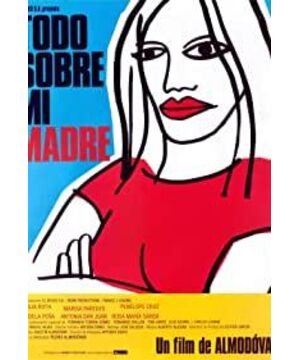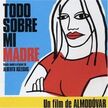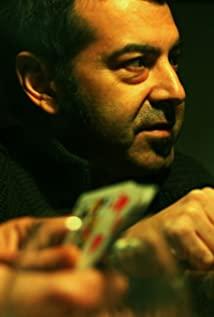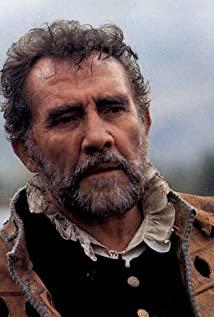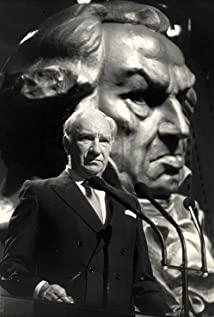The title is extremely vulgar and adapted from the title of Raymond Carver's collection of novels. For the legendary Spanish director Almodovar, his movie world, like Morrison’s music and poetry, is a journey of exploration to reward life, a ritualized confusion about "loneliness" and "desire". This This movie is Almodovar’s favorite besides "Kika" and "Nervous Woman". Almodovar’s movies always have a strong femininity in it. Most of his movies From Almodovar’s personal experience and life experience, "Everything About My Mother" is a typical Almodovar-style movie. A movie that satirizes to tolerate and to love.
"All About My Mother" is a tragedy full of warmth. It is still the main plot line of the biased subject, and it maintains Almodóvar's consistent avant-garde style, a narrative line that runs through the film and the incomparable cumbersome mixing. , The dazzling side line, the storyline triggered by different characters, connects these similarities and differences clues, and thus tends to a distinct thematic direction. In the same way, Almodovar once again puts the perspective of exploration on women. The film inherits the director’s consistent focus on the material, women and women, as well as women and men around them, making us believe that even if the main body of the story changes , But what remains unchanged is the dissatisfaction of people for desire.
One: A bit about the female role
In his new behaviorist theory, Skinner proposed that all behaviors, even humans, are determined by the history of rewards and punishments. The acquired environment can completely determine the occurrence of behavior and disappearance. Manila raised her son alone. In the main story, Manila and his son lead a simple and happy life. Although there are occasional quarrels, as far as Manila is concerned, his son is the only driving force for him to sustain himself and the source of life, but in fact, it is short and tender. Underneath his appearance, he paved the way for the sadness that followed. From the beginning, the first shot of the film was to show the cold medical equipment inside the hospital by moving the camera, and paved the way for the future "death". The son is asking for On the night of the signing, he died in a car accident in the rain. At this point, Manila’s life trajectory has begun to change, and there are too many redemptive colors in it. As a result, Manila has started from a pure mother role to a more macroscopic " The role of "mother" changed and began to appear as a "female image representative", accompanied by his own strong judgment and a more tolerant mentality. However, this change has also become a driving force to promote the development of the storyline.
Director Almodovar said: The female characters in the film are just like in my other works. They are so independent, so strong, and able to decide things. Due to the lack of a large number of male characters, the film mainly starts from the perspective of four women. The collective invasion of female characters. Fortunately, there is no image-grabbing element in the performance. The director tries to pass the joys and sorrows of the four women themselves. , To express the feminine theme to be embodied. At the beginning of the film, after Manila experienced the pain of losing his son, he decided to go to Barcelona. Sign the consent form for organ donation, and then on the train bound for Barcelona, this series of processes are all due to their own inertia, and then encounter Allah in the red light district, and save Allah in a hurry, one who has just been rolled by her husband Lola. Although the financial transgender people are in different backgrounds, it is worthy of certainty that both of them are facing difficulties in life, and the meaning of meeting by water is sublimated instantly. For women, in the story of lack of masculinity, in the tragedy. Women are often easier to combine together, which has nothing to do with the feminine qualities expressed in this film.
Lothar, who appeared in the film, is undoubtedly the most distressing role in the film. Almodovar’s film still gives Pedrope Cruz a chance to appear. In 1999, she looked tender, but it did not affect the others. The light of the actor, Lothar, the nun played by Pedrope Cruz, works as a social worker in the rescue center. Through the film, we understand that Lothar’s mother is a second-hand painter imitating the masterpiece, with a good family background, young, beautiful and kind. But because of Lola, she became pregnant and infected with AIDS. She gave birth to Lola's son and passed away. In the film, the contradiction between Lothar and his parents was repeatedly emphasized. As another mother role in the movie, Lothar’s mother also lives in helplessness and hesitation. Her husband suffers from dementia and is unable to take care of him. At the same time as the husband, he had to give up taking care of his daughter. As well as the heroine Uma of the theater, we can understand that her female assistant drugged and always, deeply challenging Uma’s emotional appeal to her, ironically, played in "A Streetcar Named Desire" starring Uma 'S character is still a tragic character.
When dealing with the relationship between these characters, Almodovar tried to construct a world supported by women without the need for men. The content of the film found that although there have been a few male characters throughout the film, they are almost always set for the needs of the plot. , Is not critical, we can notice that there is actually no man in the film. Manila’s son died in a car accident shortly after the start of the film, and his father, Lola, did not appear until the end of the film. Surprisingly, Lola has transformed into a woman, followed by Lothar’s father. Although he is still alive, he does not have independent personality thinking due to dementia. He can lead his dog everywhere. , But can't recognize his daughter, thinking that his grandson is competing with him, as a male character like "father", it can be said that he does not exist.
Two: What if the director is also a woman? Tolerance is a virtue
In the choice of the subject matter of the film, Almodovar likes to unscrupulously present the various taboos of the mainstream moral values, those that are real but are ignored by us, and the various marginal entities that exist in the corners are all used by the director. In the movie, for example, the marginalized people represented by homosexuals, transgender people, etc. in the movie. The film keeps the complexity of the Almodóvar movie plot. The exaggerated style of the narrative drama is also present in the director’s carefully designed film "thematic illustration". The characters in the film come from various parts of the city and have different occupations and backgrounds, but they really move the face of urban humans to the city. On the screen, in Almodovar’s works, the commonality of female characters is that they can still survive even if there is a huge destruction, just like in his other movie "Kika", Kika saves again at the end After her former boyfriend experienced an inexplicable tragedy, she drove home and saw the handsome man on the side of the road. She felt a little sweet, and her life was full of hope again.
What’s admirable is that even though director Almodovar’s film subject matter mostly deviates from the mainstream value system, the subject matter is too marginalized, which did not trigger the director’s judgment on political right and wrong, nor did he judge moral right from wrong, but it continued subtly. The director’s humanitarian stance, and in the character’s personality, the director deliberately did not make all the characters distinguished between good and bad. A paradox similar to this exists in the director’s consistent principle. The reason is to reveal the struggle and the multiplicity of human nature. In an attempt to make judgments about the complicated human nature. For the director, dualism should be abandoned. After all, what the film is about is the tolerance between people, which is a more subjective perspective. Therefore, although the story line appears to be very dramatic, the bizarre pictures and lens language, these sharp irony Instead, it reflects this tolerance.
When talking about Almodovar’s films, it is always indispensable to attribute his films to “female films”. Despite the different topics, the director always focuses on them, and the director gives them the “right to speak” in the film. "Break the silence" and "rise up to resistance". Fortunately, director Almodovar did not fall into the traditional female film routine: trying to use the suffering experience of suffering female characters to gain deep sympathy from the audience. After the death of his son, Manila did not start a journey of revenge. At Lothar’s funeral in the film, Manila’s husband, who has transformed into a woman, officially appeared in the film for the first time. Lola, who caused all these consequences, Manila did not feel angry, but forgave her. The theme of the film deepened by this, from losing her son to retaking Lothar’s child, and naming it the same as her own son. It means that Manila begins to recognize and accept the cycle of life. Even in the face of men who gave up their duties, Almodovar gave more sympathy and tolerance. After experiencing the big storms and hardships, life began to calm down, and Almodovar did not reserve anything. Praise the strongest watchmen in the chaotic society where right and wrong are indistinguishable. Under his lens, everything shows a natural and smooth beauty. Regardless of taboos and moral edges, after Almodóvar's mediation, it is not only delicate and indifferent, but also warm and moving.
Three: Almodóvar’s narrative characteristics and cinematic aesthetics.
From the plot point of view, the story of the film is not carried out in one line. This is also in line with the personal characteristics of director Almodóvar. This is a typical feature film. The restructured story, the continuous insertion of various characters and their stories in the film, this kind of accidental interconnection technique is full of personal characteristics, and has become one of the important characteristics of the film’s style, that is, his films have always been Maintaining complex clues, but always starting with a clue, using this as a clue, and then bringing the audience into this vortex-like storyline, Almodóvar’s films have focused on the external state of life from the early days. The free form, the gradual internalization by this time, began to change. In his words: it is an adventure in another field, trying to present a "black state" in the narrative, which is both a humorous irony and a sharp point. In this colorful and complicated kaleidoscope, all characters and plots are connected in series to form a "mirror" that expresses his perception of the world around him.
Many directors are loyal to using dark colors to express stories, and they have given the audience a hint early on. But Almodovar is not. He chooses colors, beautiful, evil, anything, any person can have their beautiful coat, but goodness is good after all, evil is evil after all, and beautiful coats will only make good things. Things are more perfect, and evil things are more disgusting. The film has a compact narrative and uses a lot of omissions. For example, a shot in Deportivo Manuela peeping at the person who received his son's heart is discharged from the hospital, Dongdong's heart fades to the shot of his son's room in Madrid, and then cut to the close-up of the train, three scenes across Mannila The most desperate time, the compactness makes the pictures and events have a sense of dumping, and brings a strong heart shock.
In dealing with the shot of Manila's son being hit by a car, a subjective lens was used. The son who was hit by the car was lying on the ground and watching his mother in a red coat running over from a distance, ending his life with this shot. , Revealing that life is a reincarnation. The poster's zooming lens complements the drama's dissolving effect. Another example is a few train scenes, no scenery outside the car, no other passengers, no platform, a close-up of a monologue, and a tunnel of memory that seems to have no end. Unlike the ordinary train scene, the director's narrative is so precise.
As a film master, Almodovar is because his films not only have complicated and complicated narratives, but also have a strong sense of style, gorgeous and colorful, dizzying image style, such as the large-scale portrait poster of Uma that appears many times in the film. , And the combination with the characters. For example, on the night Manila’s son was in a car accident, Manila leaned on Uma’s poster and waited for his son to come over on a miserable rainy night. It combined Manila’s previous personal experience and the film’s multiple stories about his mother’s Germany. The meaning is fully integrated, and creates a classical aesthetic effect. This forms a wonderful but not harmonious contrast with the images of modern life displayed in the film.
In this film, behind the film form, there are meanings of falsehood and provocation. This is a kind of sexy element. Regarding the problem of metaphor and openness, we don’t need to think about Almodo here. What exactly does Wa want to express in the movie, and what is the meaning behind these metaphors, but it is worth investigating, "Everything About My Mother"
A bit like the continuation of another early Almodóvar movie "My Secret Flower", or the extension of some elements. For example, Almodovar's "Comet Beauty" interspersed in the film actually rewrites the original sin of the original mythology of women being tempted by evil snakes and makes them return to the original role of multiplying, inclusive, and appeasing everything. It is a great influence on Christian subconscious men. The mockery of right. The film’s borrowing of the movie "Beauty of the Comet" and the drama "A Streetcar Named Desire" has the characteristics of post-modernism, and what Almodovar did is to make these things that cannot be recognized in the traditional sense and close to the reality of filmism. .
Four: The sense of the times of rational realism. It
can be seen from most of Almodovar's works that the director himself opposes all people and things that suppress humanity, authority, dogma, and mainstream. His film philosophical propositions and ideas are trying to express the unique sense of absurdity with imaginative exaggeration and dramatic structure, as well as everyone's irrespective of his or her status and informal actions. I think this is closely related to the director’s personal experience. The director himself attended a mission school and was severely suppressed by the system. Almodovar once said that the Italian neo-realist films that had the greatest impact on him, such as Antonioni and Wisconsin Dee is the representative of the film master.
Since Almodovar’s growth period was in the 1960s, it was the era when the "Pop" doctrine led by Andy Warhol prevailed, and a series of color revolutions took place, so we are talking about Almodovar’s At that time, the most talked about was the color of his films. Almodóvar’s early creation was also influenced by the American “underground film” movement at that time, but his film is rarely documentary, and has more psychological and fictional elements. What’s interesting is that in In his other work, "A Woman with a Nervous Breakdown", there is a fragment of "The Destroyer" directed by Nicholas Gu. In the film, the most prominent style is naturally bright and charming colors. Almost all of his films are brilliant and colorful, especially the indoor scenes, where the scenery and colors are very elegant. This style mainly comes from the influence of pop art, but also in the melodramatic tendency of some of his works.
Spanish culture is Baroque. For example, the residence of the protagonist Manila in Barcelona is full of combinations of various details and shapes, mixed and spliced with various mosaic patterns, and then mainly high-saturated bright colors, which also conforms to The character of the characters in the film, because their behavior is very baroque, this kind of natural tendency towards color tends to be more reasonable. This conceptual creative style is more obvious in "Everything About My Mother". For example, this kind of black humor is flooded in the movie. For example, after Allah joined the troupe, she had to cancel temporarily because of the actor's illness. Before the performance, ridiculed himself in a one-man show, drew full applause, opened his body, and joked about the amount of calls for different parts of the body.
Indeed, in this film, Almodovar combines the story with the real environment and the specific era. His creation has always avoided the "manifest" of the environment and the era. For the "real reality" we live in, It's still affectionate. In the film’s aperture on the streets of Barcelona and the overhead shot of the railway that was picked at the end, Almodóvar wanted to express this visual message: when things are human and not, the characters accept the cycle of fate, Manny After experiencing all this, La returned to reality and became more calm. Therefore, "All About My Mother" is more like a neo-realistic movie.
Almodóvar believes that extremes and fatalities make lusts endlessly attractive, and the most extreme situational settings often create the deepest emotions. In this film, at Lothar’s funeral, but the more important aspect is Laura-the devil and plague in Manila’s mouth appear for the first time in a desperate and beautiful image, but a terrifying tall man The appearance of his body is long hair and heavy makeup. For the director, these beliefs and guidelines include a religious lifestyle. The concept of group life also includes the feminist movement or the gay movement.
On the whole, the film has a distinct hierarchy. It can be said that Almodóvar’s free form focused on the state of life in the early stage and gradually turned into a transitional period work in the later stage. Although it cannot be said to be a perfect work, it is enough to be commendable. The two intertwined lines of death and emotion are reasonable and fit the overall film narrative style. When we can forgive harm, all we give to the world is love. There is a line from "A Streetcar Named Desire" that often appears in the film: I always rely on the kindness of strangers, I will never come back, never, this seems to be Manila's voice. Different from the general "master", Almodovar has no expression of indifferent or paranoid madness, but he does not appear to be super erotic or holy as a thinker. He does not try to manipulate morally, but uses cunning to cover up fragility and irritability. .
Almodóvar himself said: Life itself is full of passion to master power, because social inequality, for individuals, passion for life, is the only driving force that makes life meaningful. That is my decision. The future you want!
Written in in media
View more about All About My Mother reviews


